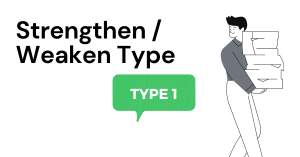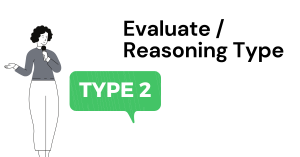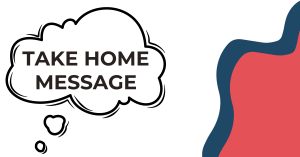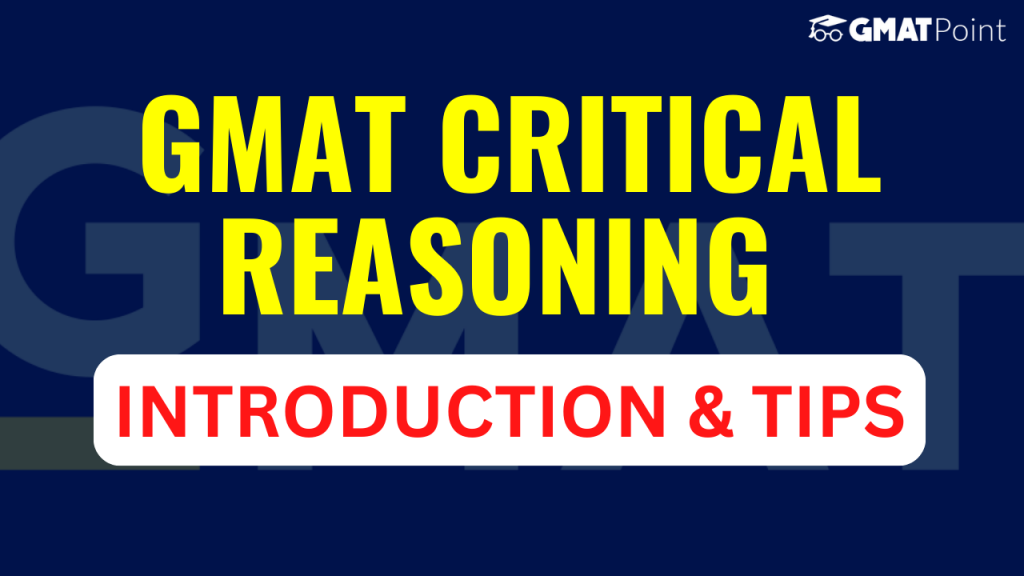GMAT Critical Reasoning Section – Introduction and tips
The GMAT (Graduate Management Admission Test) is a vital step in your journey toward obtaining a graduate degree in business administration. Among its various sections, the GMAT Critical Reasoning section is designed to assess your ability to analyze, evaluate, and construct arguments. This skill is crucial for success in business and management, making this section a key component of your overall GMAT score. In this article, we’ll provide you with an in-depth introduction to the GMAT Critical Reasoning section along with valuable tips to help you excel.
Take Free GMAT 2023 Daily Targets
Subscribe To GMAT Preparation Channel
The GMAT Critical Reasoning segment serves as an evaluative tool for a specific set of logical attributes, often unfamiliar to many students undergoing test preparation. Within the GMAT Verbal section, you will encounter three primary categories of Critical Reasoning questions:
- Weaken / Enhance Argument Flaws: In this category, your task involves critiquing a provided argument or plan (referred to as the stimulus) and subsequently selecting an answer choice that highlights or rectifies a weakness within that stimulus.
- Evaluation of Line of Reasoning: This category requires a comprehensive analysis and description of the reasoning pathway employed within the given stimulus.
- Deriving Valid Conclusions: The focus here is on generating a valid and logically consistent conclusion based on the information furnished in the stimulus.
Delving further into type 1 questions, it’s essential to recognize several significant subtypes that are often expounded upon by test preparation companies: strengthening, weakening, assumption, evaluation utility, and resolution of paradox. Among these, the majority of Critical Reasoning questions (well above 75%) you will encounter on the GMAT fall under type 1. Therefore, the strategies outlined in this article will predominantly center around this common category.
Type 2 questions, commonly labeled as method of reasoning questions, often referred to as boldfaced questions, necessitate an understanding of the underlying thought process within the stimulus. On the other hand, type 3, more commonly known as inference or conclusion questions, demand the derivation of sound conclusions from the information presented in the stimulus.
Type 1: Strengthen / Weaken Type

Strengthen/Weaken question types together constitute the maximum number of questions out of the 13-15 Critical Reasoning questions you will encounter on the Verbal section of the GMAT.
- Opposition member: A new highway was recently constructed in our city to alleviate traffic congestion. Prior to the highway’s construction, commuters experienced significant delays during peak hours, with average travel times exceeding an hour. However, in the first month after the highway’s completion, the average travel time during peak hours increased to 90 minutes. Evidently, the new highway has failed to address the traffic congestion issue.
Which of the following, if true, most seriously weakens the opposition member’s argument?
- The city implemented new traffic signal synchronization along the old routes, resulting in improved travel times for non-highway users.
- The new highway was constructed with state of the art technology to reduce travel times, but the traffic volume has significantly exceeded initial projections
- Heavy rainfall during the first month after the highway’s completion led to frequent road closures and increased traffic congestion
- The city’s population has been steadily decreasing over the past decade, resulting in a decline in overall traffic congestion
- Prior to the highway’s construction, the city experienced ongoing road construction projects that caused frequent delays and congestion
Only Option C weakens the opposition member’s argument by providing an alternative reason for the increased travel time during peak hours after the highway’s completion. The heavy rainfall and resulting road closures would have disrupted traffic flow, causing increased congestion and longer travel times. This suggests that the new highway may not be at fault for the increased travel time. Instead, the temporary external factor of heavy rainfall and associated road closures affected the traffic conditions. The other answer choices do not directly address the impact on traffic congestion after the highway’s completion or present alternative explanations for the increased travel time, making them less relevant to the argument.
Type 2 : Evaluate / Reasoning Type

The answer options on this question type are always framed in the form of questions. So the best way to tackle this question is to evaluate the argument with respect to answer to each question.
Q.Most of the world’s supply of uranium comes from mines. It is possible to extract uranium from seawater but the cost of doing so is greater than the price that uranium fetches on the world market. Therefore, until the cost of extracting uranium from seawater can somehow be reduced, this method of obtaining uranium is unlikely to be commercially viable.
Which of the following would be most useful to determine in evaluating the argument?
(A) Whether the uranium in deposits on land is being rapidly depleted.
(B) Whether most uranium is used near where it is mined.
(C) Whether there are any technological advances that show the promise of reducing the cost of extracting uranium from seawater
(D) Whether the total amount of uranium in seawater is significantly greater than the total amount of uranium on land.
(E) Whether uranium can be extracted from freshwater at a cost similar to the cost of extracting it from seawater.
The first task is to precisely identify the argument — unless the cost comes down, extraction of uranium from seawater will remain an unviable.
The question is asking you identify the information that will help you evaluate this argument. So what do you need to check — can it become viable even without the cost coming down?
Almost 9 out of 10 students confidently choose option (C) to be correct choice.
The best way to answer such questions is to take each option and evaluate the answers to the question posed. In the above question the answer to each of the options can either be YES or NO.
If the answer to (C) is YES, it means that in future the cost of extracting from sea-water will come down. But this does not help you evaluate the argument in any way.
For example, if someone tells you that you cannot get an admit into XYZ College without scoring a 700 on the GMAT®, how will you evaluate that argument? You will check if there are candidates who got an admit with a score less than 700.
So knowing the answer to the question posed in option (C) is equivalent to checking whether you can get a 700, this is not the same as evaluating whether you need a 700 in the first place!
So knowing whether the cost of extraction will come down is not going to tell you whether it needs to come down.
Let us look at option A. The answer to the question posed in this option can again be a YES or NO.
If the answer is YES, that is, the uranium in land deposits is rapidly decreasing, then there will be no option but to very soon start extracting it from sea irrespective of the cost.
If the answer is NO, then it means that demand for uranium can be met by extracting uranium from land at a cheaper cost, so extraction from seawater will remain infeasible.
So, knowing the answer to the question posed in option A will help us evaluate whether the argument is valid or not.
Type 3: Conclusion Type

Although aspirin has been proven to eliminate moderate fever associated with some illnesses, many doctors no longer routinely recommend its use for this purpose. A moderate fever stimulates the activity of the body’s disease-fighting white blood cells and also inhibits the growth of many strains of disease-causing bacteria.
If the statements above are true, which of the following conclusions is most strongly supported by them?
(A) Aspirin, an effective painkiller, alleviates the pain and discomfort of many illnesses.
(B) Aspirin can prolong a patient’s illness by eliminating moderate fever helpful in fighting some diseases.
(C) Aspirin inhibits the growth of white blood cells, which are necessary for fighting some illnesses.
(D) The more white blood cells a patient’s body produces, the less severe the patient’s illness will be.
(E) The focus of modern medicine is on inhibiting the growth of disease-causing bacteria within the body.
These type of conclusion questions have two premises based on which you have to draw a conclusion. If you go beyond the specifics of the content and look at the structure of the premises they will be in the following format:
Premise 1: X causes/influences/is related to Y
Premise 2: Y causes/influences/is related to Z
So, it follows from this that the conclusion has to establish a relationship between X and Z.
If we look closely at the above question the same pattern is evident.
Premise 1: Aspirin eliminates fever.
Premise 2: Fever, by stimulating WBCs, helps the body fight illness.
The conclusion has to thus establish a link between aspirin and illness. So whatever the conclusion, the two protagonists aspirin and illnesses have to be present. Options D & E are thus eliminated straightaway.
Option A is incorrect since it talks about aspirin having a positive effect as a painkiller, which is not something discussed anywhere in the passage.
So we are left with options B and C. While this is a relatively easy question, test-takers often fall option C, which is a good trap option.
Option C establishes a direct relationship between aspirin and WBCs — aspirin inhibits growth WBCs, which is incorrect; aspirin eliminates fever that is necessary for WBCs. So if option C is true it means that we can take aspirin and reduce the growth of WBCs, which is not true.
The correct option should precisely identify the conclusion that can be drawn without assuming information in the passage. We cannot assume that since fever is mentioned in the passage, option C is talking only about cases where there is a fever.
Option B correctly establishes the relationship between aspirin and illness
Take Home Message:

Mastering the GMAT Critical Reasoning section requires a systematic approach and a set of proven strategies. The example provided highlights that the challenges often arise from careful negation and precise wording rather than obscure flaws or convoluted arguments. As you engage with official GMAT Critical Reasoning practice problems, focus on developing the following essential skills:
- Deconstructing Arguments Efficiently: Train yourself to quickly break down and comprehend the structure and content of provided arguments. Understanding the premises and conclusions is pivotal for accurate analysis.
- Effective Argument Analysis: Hone your ability to dissect arguments effectively. Practice identifying and pinpointing fundamental flaws in the line of reasoning. Being able to recognize broader weaknesses independently is a crucial skill.
- Navigating Language Tricks and Abstractions: GMAT Critical Reasoning questions often employ intricate wordplay and abstract presentation. Developing the knack for deciphering these linguistic traps is essential for accurate interpretation.
By honing these skills, you can anticipate a significant improvement in your Critical Reasoning percentile. Moreover, mastering these techniques will enable you to tackle CR questions more swiftly, alleviating time pressure during the GMAT verbal section.
Approaching the GMAT Critical Reasoning section strategically is integral to achieving your target score. Dedicate focused effort to understand, analyze, and navigate the intricacies of arguments. As you consistently apply these best practices, you’ll enhance your CR performance, boost your overall GMAT results, and move closer to realizing your academic and professional aspirations in the field of business administration.
Also, check out the Important :
- Master Your Next GMAT Attempt: Effective Strategies to Ace the GMAT
- Latest Update On GMAT Focus Edition (Changes In Format)
- GMAT Focus Edition | What We Know So Far
- GMAT 2023 Syllabus Download PDF | GMAT Quant, IR, AWA & Verbal Syllabus In Detail
- Everything about ISB Admissions
- GMAT Score vs Percentile | GMAT Percentile Ranking
- What Is GMAT? – Everything to know about the test
- How To Prepare For GMAT In 1 Month?
- What Is Tested In GMAT Verbal? How To Improve Verbal In GMAT?
- Introduction To GMAT Verbal Reasoning (With Solved Examples)
- How To Improve In GMAT Sentence Correction: Tips, Tricks, and Strategies
- 6 Interesting Facts About The GMAT Exam You Should Know
- GMAT preparation for beginners: What to Study and How
- 6 Best Practices for GMAT Preparation: The Ultimate Study Guide
If you are starting your GMAT preparation from scratch, you should definitely check out the GMATPOINT
